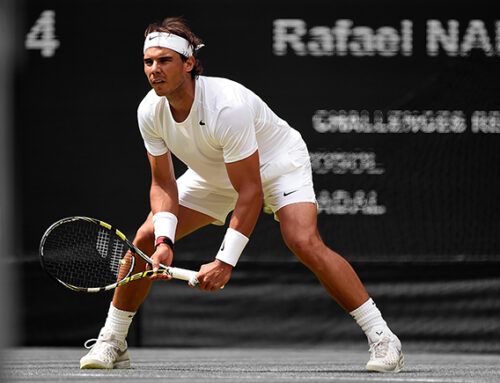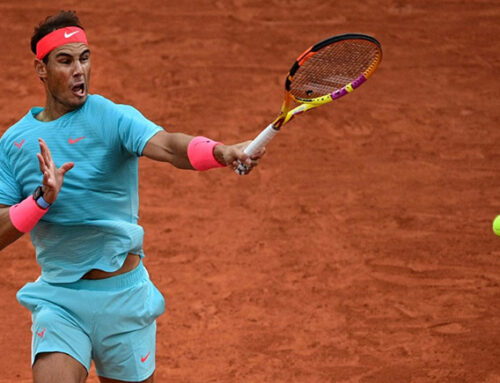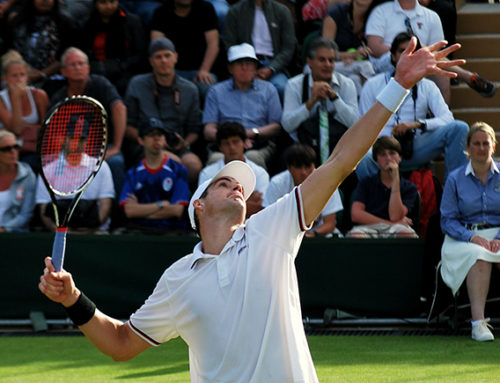Part 3 of the “Finding Federer” series is on hold as it turned out to be a positively mammoth amount of work collating and analyzing all the video required (for interested readers, it is a breakdown of the changes in Federer’s forehand technique in the last 5-6 years). Given the new year is about to hit, I thought it timely to address one of the questions that is on many tennis fan’s minds: can Federer be a factor in 2014? The short answer from Tactical Tennis is “yes”. However in order to do so Federer can not simply redux 2013, which was a disaster year for him. Instead he simply must make certain changes and adaptations, but if he does so can be both a factor at the Grand Slams and, believe it or not, a factor in the race to #1 in the world. What changes you ask? Let us delve deeper:
1) Federer Must Remember How To Defend
Federer has always been the most attacking of the ‘big four’, and in recent years that difference has become more and more exaggerated. However it is important to take a step back and recognize why Federer was such a dominant #1 for such a long time: balance. Federer was in truth the first male player to have a complete game – to truly possess world class weapons (the serve, the forehand, the slice backhand) and yet also possess world class defense (the movement, the anticipation, the slice, return of serve). Prime-time Federer couldn’t just step out on the court and beat you, he was also incredibly hard to beat.
Over the course of the last few years as Federer has aged, he’s actively tried to become more aggressive with his game. This is most likely an effort to reduce his time on-court and keep points shorter but it has had a severe impact on his results (especially on clay). He’s stopped using his complete game to set up points the way that he used to (the Finding Federer article on the slice backhand is just one example). He’s pushing too hard with his forehand, attempting to end points prematurely and given that his forehand isn’t quite as smooth as it used to be (partly as a result of his repeatedly trying to hit it flatter and harder) the errors are piling up.
Federer must be willing to hang around in points longer, to extend rallies and grind out some results as needed. On this alone his winning % for the year would improve dramatically.
2) Federer Should Switch To A Lighter Racket
There has been a lot of talk in recent months about Federer and his racket situation. He tried a different frame for a short period in 2013 before returning to his usual sticks. Very little is known about the racket Federer used for that brief period beyond that it featured a larger head size than his usual frame. Talk on message boards is how it will reduce his shanks, and the bigger sweet spot will help him (to learn more about why these are not really factors, check out our earlier post on choosing a racket). However he does need a change and here is what he should change and why:
Federer should move to a slightly bigger head to improve his rotational stability. A shank is a shank is a shank, but for those slightly off-center hits Federer will get a more consistent response from his string bed and help to cut his errors down slightly. More importantly though Federer should switch to a lighter frame than the one he has traditionally used. For years Federer has used an extremely heavy custom frame (very different from the Wilson 90″ you see on the shelves). Down close to the hips, when Federer is able to use all his big muscle drivers to pull the racket that is fine, but he is suffering (and has suffered for a very long time) above the shoulders, particularly on the backhand side.
A lighter frame puts less strain on the smaller muscles that are used to swing the racket for contact points around shoulder high and above. This means he can swing aggressively up there on the backhand without compromising his core stability, an issue he’s had over most of his career that Nadal has exposed to great effect.
3) Federer Should Hit The Gym
Or more specifically, Federer has a desperate need to add some muscle mass above the waist. For a 6’1, ~185lb man Federer is positively anemic above the waistline (with the exception of his right forearm). Rumor has it that he’s intentionally avoided putting on any mass in his upper body for fear it would affect his timing and rhythm. However when we look at his long-standing problems when the ball gets higher on the backhand, some more strength would go a long way to helping him with this one glaring weakness in his otherwise phenomenally well-rounded game. The man has tree trunks for legs, and adding more strength upstairs would help him out a lot.
4) Federer Must Get Healthy
Federer has always been rather taciturn with regards to any injuries. He has played hurt on many occasions, and not mentioned word of the injury until days, weeks or sometimes months after the fact. However it is clear that that back injury impacted his 2013 season severely (exacerbated by the fact he tried to play through it at multiple points in the year). It is also clear that, despite having a very injury-free career as a whole, Federer has injured his back with significantly greater frequency than any other part of his body. He struggled with it throughout 2013, had injured it briefly around Wimbledon in 2012, had back problems in 2010…
Federer has done a fantastic job of managing his schedule in years past. It would appear from various interviews that he learned his lesson in 2013, having stated multiple times that he regrets playing hurt during the year. Whether or not he is truly healthy and ready for this season remains to be seen, but doing so is critical for his chances to have a shot at the big tournaments.
5) Federer Must Take His Chances On Break Points
Challenge time: name a greater shot-maker in the history of men’s tennis than Roger Federer. Marcelo Rios? Fabrice Santoro? Alexandr Dolgopolov? Simply take Federer’s highlight reel from any single year and it far surpasses that of almost any other player’s entire career. And yet if we go back and watch Federer play Nadal in most of their career matches on break points he plays the most passively safe points imaginable. It isn’t just limited to Nadal – for a long time Federer’s “B” game was enough to get the break and so he’s content to play many of the big points on cruise control when returning, stepping up to ‘amazing’ only when forced to by his opponent. Federer has won 17 grand slams. He’s married with two children. He owns most of the records in tennis. He has nothing to lose and it’s time that he finally played like it on the big points.
Federer will take the court in Brisbane for the first time ever this year, and we’ll get our first glimpse at the great champion’s form to start the year. Federer has a history of entering the season ready to perform, so his play in Brisbane should be an interesting indicator as to his state of health.


